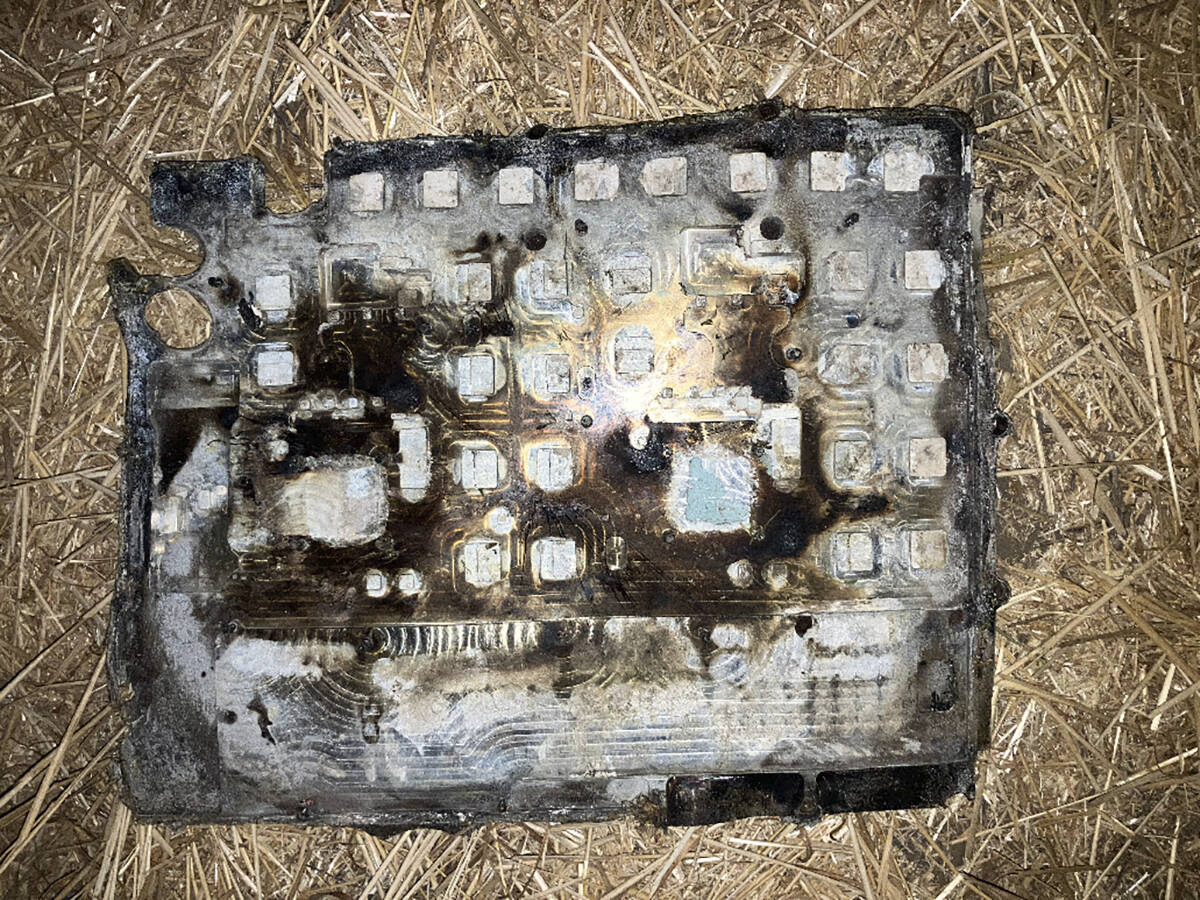When Dwayne and Elaine Waldner retired from farming two years ago, they thought their days of battling insects and applying chemicals were over.
Unfortunately, that hasn’t been the case.
Earlier this year, the Waldners hired an aerial applicator to spray the shelterbelts around their farmyard.
In July, the spruce trees in their shelterbelt began to develop a distinctive brown hue.
Dwayne examined the trees and found thousands of tiny caterpillars feeding on the trees and stripping the boughs of their needles.
Read Also

Farmers asked to keep an eye out for space junk
Farmers and landowners east of Saskatoon are asked to watch for possible debris in their fields after the re-entry of a satellite in late September.
After a few phone calls and internet research, the couple identified the culprits as larvae of the yellow-headed spruce sawfly.
The spruce sawfly is a tiny flying insect whose offspring can strip a tree of its foliage, leaving nothing but a skeleton of bare branches.
The larvae are voracious feeders. Within two weeks, some trees in the Waldners’ yard were bare. If left untreated, the caterpillar-like larvae can kill a young spruce tree within three years.
“They can do a lot of damage,” said Dwayne, who initially thought the damage was caused by spray drift from nearby fields.
“We’ve never had any troubles like this before. The evergreens are always lush and green … but this year they look absolutely terrible.”
He said trees between eight and 12 feet high were hardest hit.
Small trees escaped damage as did the larger trees, roughly 40 feet high.
Officials from the Canadian Forestry Service say larvae from the sawfly normally feed on trees three to five years old.
Larvae are green with a yellowish-brown head and are usually two centimetres long.
They normally start feeding in the treetops and eventually work their way down the trunk.
Elaine said the larvae are well camouflaged and hard to detect, even at close range.
Control options include spraying with a mixture of water and detergent or insecticidal soap. Severe infestations may require chemical controls.
Bill Schroeder, an agriforestry research manager at Agriculture Canada’s Indian Head Shelterbelt Centre in Indian Head, Sask., said the centre receives inquiries about the insect each year but he didn’t know if this year has been worse than usual.
The Waldners, who live about 20 kilometres northwest of Saskatoon, said they have had several people stop in their yard to inquire about the damaged trees.
“They look like your Christmas tree at about the end of February,” Waldner said. “There’s a few brown needles left and the stems. That’s all that’s left on the trees. They were heavily infested.”

















